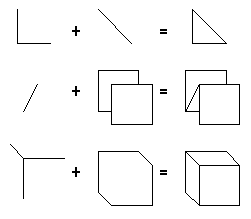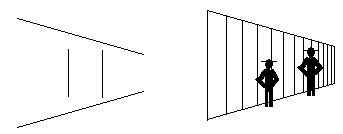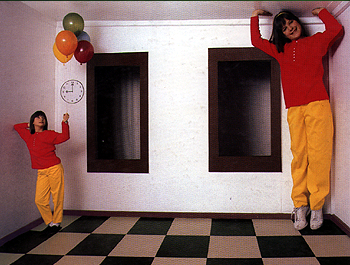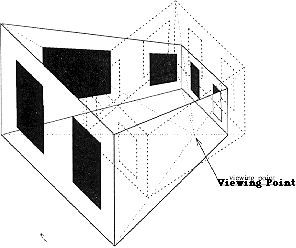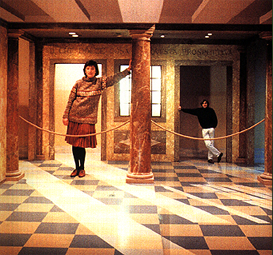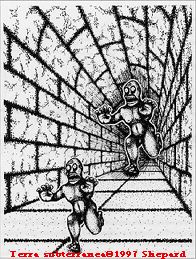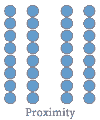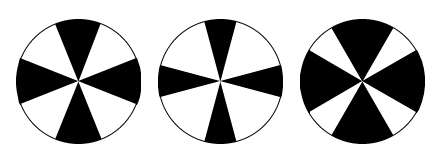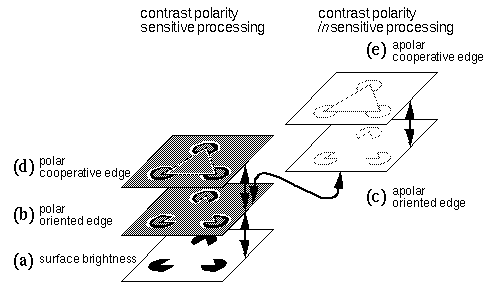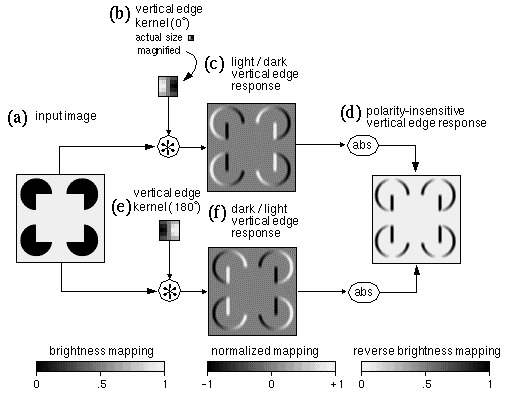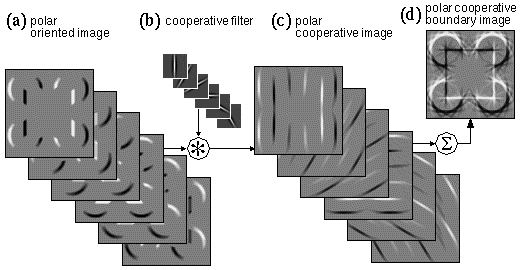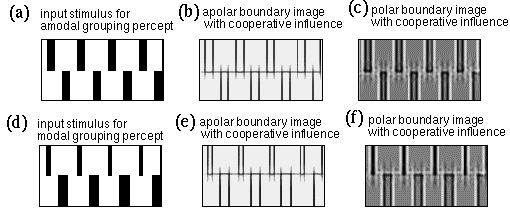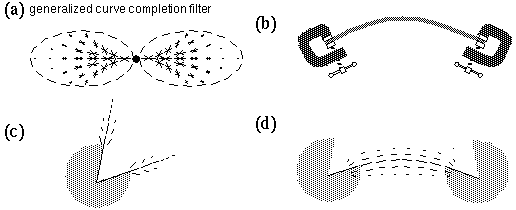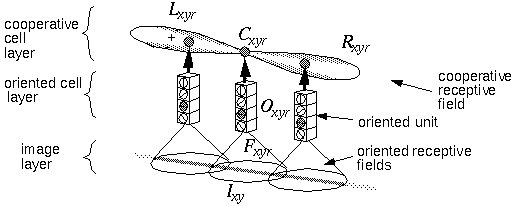Computing
& the Arts
1.
Computational theories of
Visual Perception 
Gestalt theory
(circa 1890 - 1930)
"gestellt:" put together, organized structure
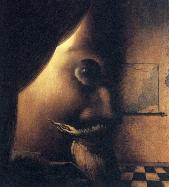
Dali, "L'image disparait," 1938.
"Perception of a thing (an object, a scene,
a musical partition, ...) is more than the sum of its parts."
Examples of global percepts:
Sum is more than the parts.
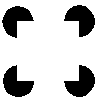
Kanizsa figure
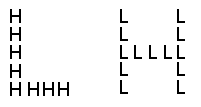
We are better at recognizing the "global" letters.
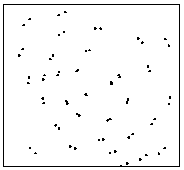
Glass patterns
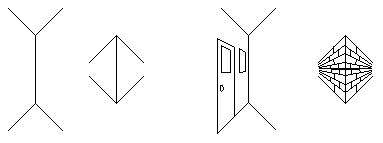
Muller-Lyer illusion (makes sense in a spatial context)
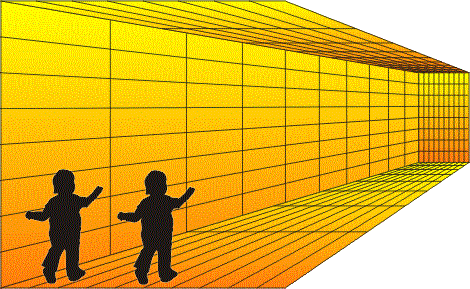 Copyright ©2005 The McGraw-Hill
Companies.
Copyright ©2005 The McGraw-Hill
Companies.
3D object detection as
low-level percepts
Psychophysical studies
have shown that contours forming 3D object percepts are perceived in
parallel when
hidden amongst distractors in a visual search task, whereas control
features composed of the same elements are perceived serially. This
suggests that in a task of visual search the 3D percept is a low-level
pre-attentive phenomenon, rather than a high-level cognitive
phenomenon.
NB: This is to be compared to Marr's thesis of 3D models built in a
last "cognitive" layer.
Gestalt Principles
The Grouping
principles
1.
Proximity / Contiguity
Visual elements tend to be
grouped together according to their nearness.
2. Similarity
Visual items similar in
some respect tend to be grouped together.
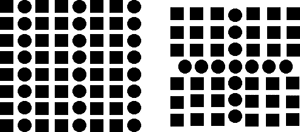 Similarity in shape
Similarity in shape
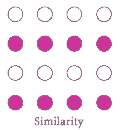 Similarity in color
Similarity in color
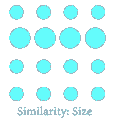
Similarity in size
3. Closure / Good continuation
Visual items are grouped
together if they tend to complete some entity.
We
see a circle (of circles).
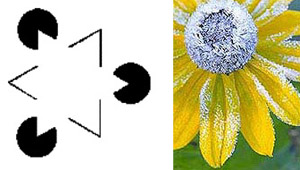 Contour completion leads to global surface percepts.
Contour completion leads to global surface percepts.
4.
Simplicity
Visual
items will be organized into simple figures according to symmetry,
regularity, smoothness, ..., easy labelling (unambiguous).
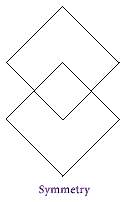
Two versus three diamonds
The whole of a figure is
perceived rather than the individual parts which make up the figure.
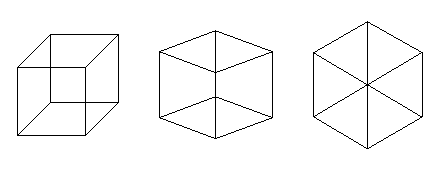
It is "simpler" to see a 3D cube on the left.
5. Area / smallness
Smaller
areas tend to be seen as figures against a larger background.
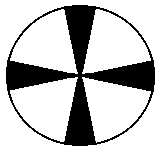
We tend to see a black cross, not a white one.
6. Figure and Ground
Similar elements (figure)
are contrasted with dissimilar elements (ground) to give the impression
of a whole.
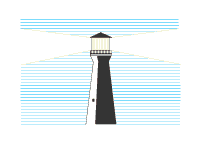
That's easy...
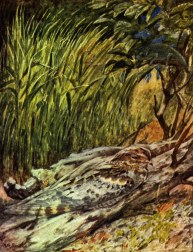
Camouflage: not so easy...
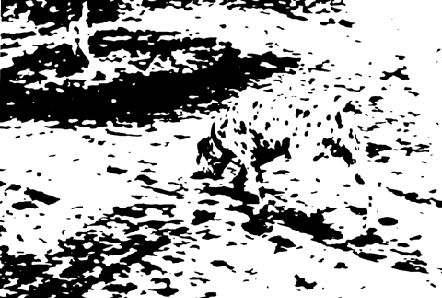
Lack of contrast between elements.
Ambiguous figure/ground: similar size in the visual field.
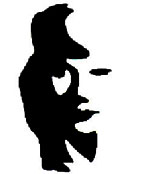
One percept at a time...
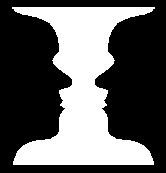
One percept at a time...
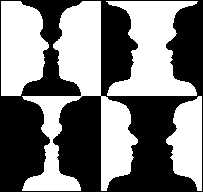
Figure/Ground versus Area
Illusions : False percepts can
be created by the adequate justaposition of elements together creating
new, not necessarily existing, features or objects.
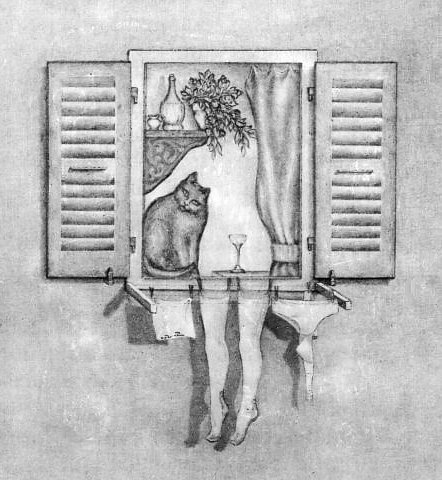
"The
window," by Sandro del Petre.
The main elements of the picture are a pair of stockings,
a cat, a glass, a curtain, a shelf and a plant.
The woman is the product of your "imagination."
Computational Models
Gestalt
theorists proposed models of perception involving analog field-like
forces whereby the final global percept emerged by a parallel
relaxation of multiple local force.
Steven Lehar's Multi-Level
Reciprocal Feedback (MLRF)
model.
2nd Order Contour Completion
(curvature)
Dynamic Perception
Memory structures information "based on associative connections" and a
"tendency for optimal organization:"
e.g.,
motion pictures as (static) pictures in motion.
Musical/Auditory Perception
In auditory perception, it
has been proposed [Terhardt:Music:1987] that the most
peripheral level of a gestalt percept is embodied by the spectral pitches which are
analogous
to primary visual contours,
while virtual pitches
are equivalent
to "secondary", or "illusory"
visual
contours:
The pitch that you ordinarily
hear is not
dependent on the fundamental being audible; the auditory
system extracts it from a range of the Fourier spectrum that
extends above the fundamental.
"Pitch
is
that auditory attribute of sound according to which sounds can be
ordered on a scale from low to high."
Terhardt proposes that the
perception of musical tones, chords, and melodies is performed via an
"Hierarchical Processing of Categories."
References
Behrens:Design:1984
Behrens, R., Design in the
visual arts. Englewood Cliffs, NJ: Prentice-Hall, Inc., 1984.
Behrens:Art:1998
Behrens, R., Art, "Design and Gestalt
Theory,"
Leonardo,
1998.
Local copy

Chang:Screen:2002
Chang, D., Dooley, L., & Tuovinen,
J. E., "
Gestalt
theory in visual screen design: A new look at an old subject,"
Proc. of the 7th ACM World Conf. on Computers in Education, vol.8, pp.
5-12, Copenhagen, Denmark, 2002.
Local copy

Detrie:
Durand:Gestalt:2002
Green:Kofka:2000
Koffka:Perception:1922
Lehar:GestaltOne:1999
Lehar, S.,
"Computational Implications of Gestalt Theory I: A Multi-Level
Reciprocal Feedback (MLRF) to Model Emergence and Reification," in
Visual Processing, 1999.
Moore:Gestalt:1993
Moore, P.
& Fitz, C., "Gestalt theory and
instructional design." Journal of Technical Writing and
Communication, 23(2), 137-157, 1993.
Muller:Interfaces:1995
Mullet, K. & Sano, D., Designing
visual interfaces: Communication oriented techniques. Englewood
Cliffs, NJ: Prentice Hall, 1995.
Singh:Part:2001
Sing, M., &
Hoffman, D., "Part-Based Representations
of Visual Shape
and
implications for visual cognition,"
Chapter 9 in From Fragments to Objects: Grouping and Segmentation
in
Vision, T. F. Shipley & P. J. Kellman (Eds.), pp. 401-459. Elsevier
Science. 2001.
Local copy

Terhardt:Music:1987
Terhardt,
E. , "
Gestalt
principles and music perception."
In:
Perception of Complex Auditory
Stimuli (Yost, W.A., Watson,
C.S., eds.), Erlbaum, Hillsdale, NJ, 157-166, 1987.
Wertheimer:Forms:1923
Links
AmbiguousArt:1998
Gestalt:Society:1978
Grouping:Berkely:1998
IlusionesOpticas: 2002
Levin:Web:2004
BACK
Last update: Oct. 10, 2006.



